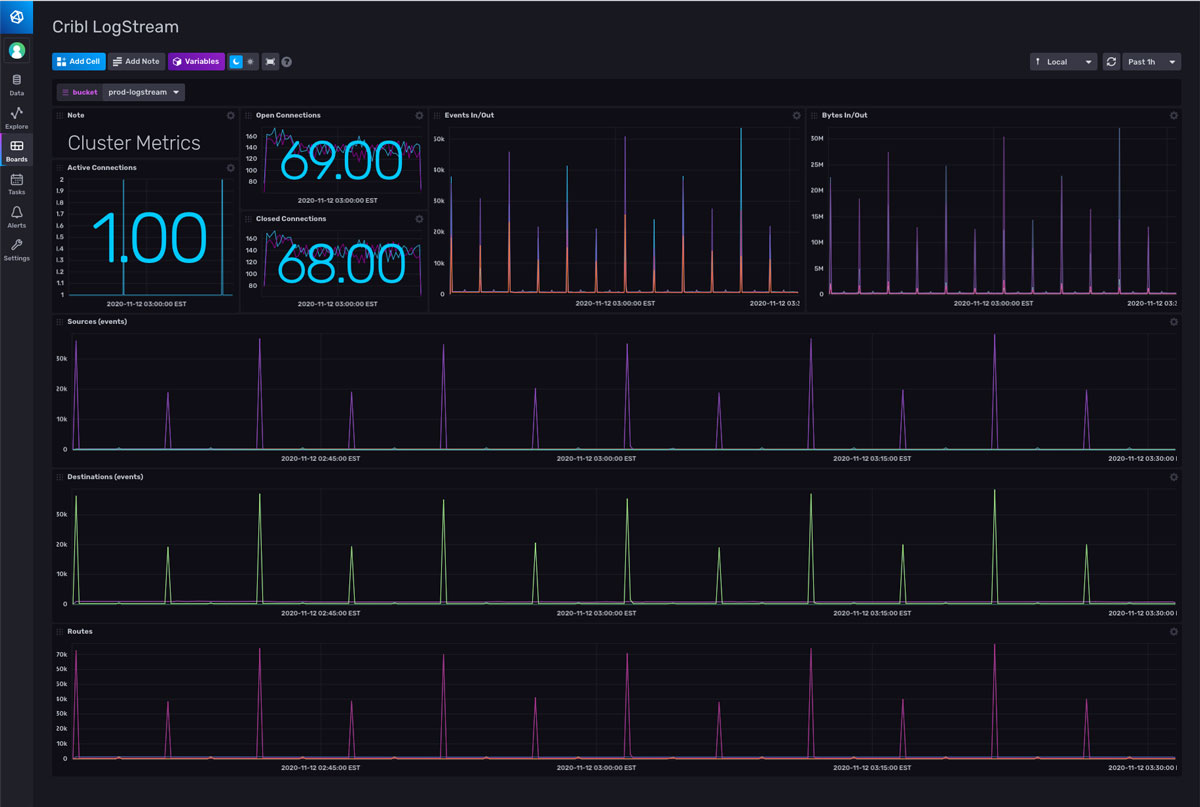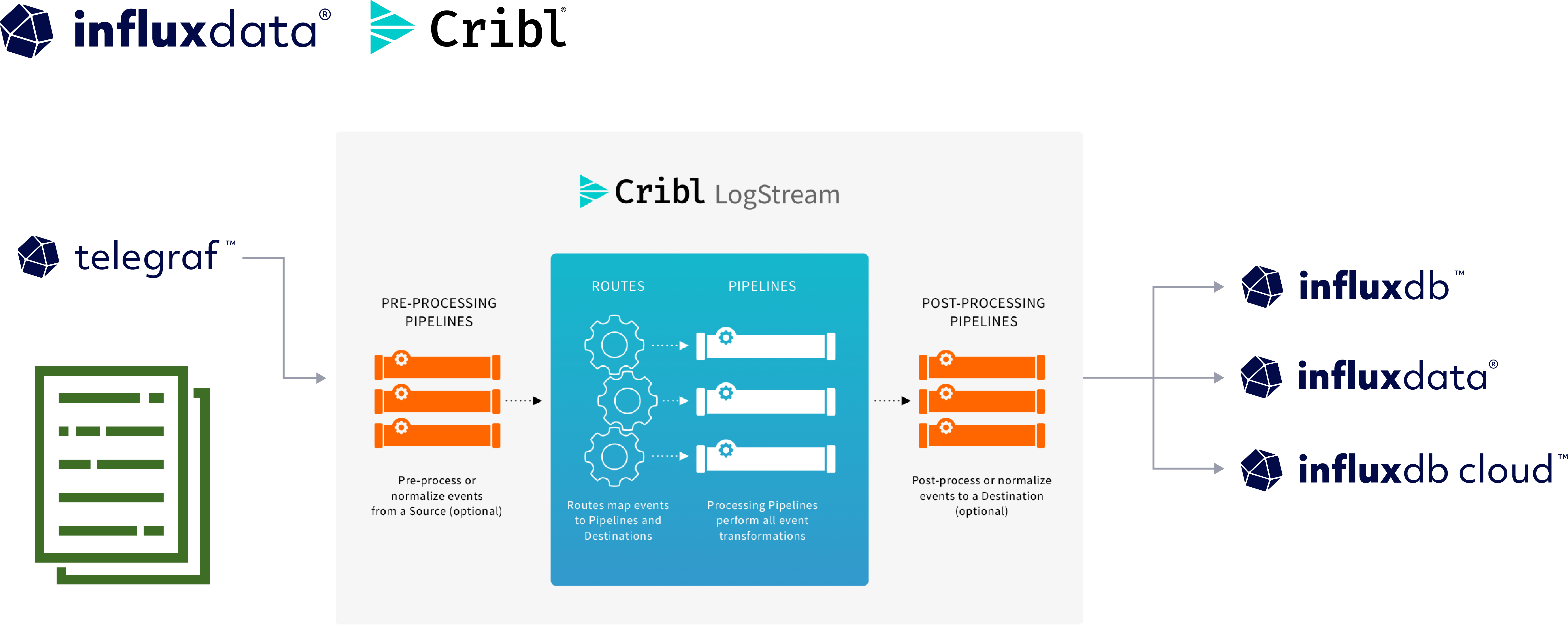
Cribl
Cribl LogStream is a purpose-built, vendor-neutral, observability pipeline that allows customers to collect data from any source to any destination while allowing them to route, reduce, encrypt, enrich and shape their data.
Cribl and InfluxData
Cribl has been collaborating with InfluxData and its customers since the early days of Cribl’s product launch in August 2018 and presented at InfluxDays on The Power of Infinite Choice. In the presentation, Steve Litras, Cribl’s Lead Evangelist, showed how customers have the ability to collect and send their data to the destinations of their choice.
It starts with Cribl LogStream collecting data from any source and being able to shape the data and conform it for the structure required from the destination. This can allow log data to be transformed to metrics and sent to InfluxDB. The data can also be routed to inexpensive objects stores where it can be replayed if necessary, reducing the retention burden on the time series database.
Cribl LogStream can also be leveraged for migrating between versions of InfluxDB (1.x -> 2.x or to InfluxDB Cloud). This way, the same data can be fed to multiple destinations without disturbing the existing deployment.
How to get started with Cribl
Cribl LogStream collects metrics about itself and can easily send the data to a centralized InfluxDB deployment. Just download Cribl LogStream and setup the internal metrics source to send to InfluxDB destination. The Cribl LogStream community InfluxDB template can be used to visualize your Cribl LogStream system.
Steps:
- Download and install Cribl LogStream.
- Configure the Cribl Internal Source.
- Configure the InfluxDB Destination in Cribl LogStream.
- Create a default Route in Cribl LogStream.
- Create a Pipeline in Cribl LogStream to deliver the data to InfluxDB.

Key resources
- Webinar: Upgrading Made Easy: Moving to InfluxDB 2.x or InfluxDB Cloud with Cribl LogStream
- Docs: Cribl LogStream Documentation
- Blog Post: Logs, Events, Metrics and Traces - Oh My!
- Video: Cribl LogStream Overview video
- Integration: Configuring Cribl LogStream to Output to InfluxDB
Simplified migrations
Cribl LogStream can be used to help existing InfluxDB users migrate their data to either a newer version of InfluxDB or InfluxDB Cloud, without harming the data going to their legacy instance.
The integration starts with having Telegraf send its data to Cribl LogStream via a standard HTTP source. The data can then be transformed to fit the specific schema for each of the data destinations. The routed data can then be sent out of the pipelines and finally land in the destinations. With the data flowing into the InfluxDB solutions, the customer can now build out their applications / use cases with the same data flowing into each platform.
As an observability pipeline, Cribl LogStream can be used to collect logs and convert them to metrics. The data can also be masked to protect against PII or sensitive data leaks. Data can also be enriched prior to landing in your destination, allowing for better context to be added to events.

VIDEO
The Power of Infinite Choice | InfluxDays
Steve Litras talks through how to make smart choices when considering the tradeoffs in observability platforms.What's next?
Questions? Get Answers
